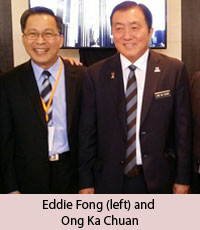PRA Chinese
Rubber Journal Asia Injection Moulding Asia Energy, Oil & Gas Asia
VISIT OUR OTHER SITES:
PRA Chinese
Rubber Journal Asia
Injection Moulding Asia
Energy, Oil & Gas Asia
Malaysia’s plastics exports up slightly; skilled workforce still a challenge

In 2016, Malaysia exported RM13 billion worth of plastic products, up by a slight 1.2% from RM12.9 billion in 2015. This year, exports worth RM3.5 billion were recorded in the first quarter and the sector is expected to grow 10% over the year.
The slightly higher export figure can be attributed in part to the weakened ringgit currency, making exports cheaper, given that the primary export destinations include Europe, China, Singapore, Japan and Thailand.
The electrical and electronics (E&E) industry is still one of the largest market segments, accounting for 36.6% of the market.
Furthermore, from 2013-2016, the Malaysian Investments Development Authority (MIDA) approved 186 projects in the plastics industry valued at RM4.5 billion, which created 14,500 job opportunities.
Nonetheless, the sector is facing a dire shortage of skilled and semi-skilled workers, as a result of the government’s policy to reduce dependency on foreign labour.
According to Eddie Fong, Secretary-General of the Malaysian Plastics Manufacturers Association (MPMA), speaking at a conference in Kuala Lumpur, “Though we fully support the government’s policy, we must have a long-term plan to enhance skills, increase the level of automation and adopt the appropriate technologies to achieve higher efficiency.”
Datuk Seri Ong Ka Chuan, Minister of International Trade and Industry, who officiated the conference, acknowledged the shortage. “To sustain growth, the industry will need access to a sufficiently skilled workforce, which is a challenge today.”
MPMA has undertaken a study with Monash University to assess the current and future skills needs in the Malaysian injection moulding industry. In summary, the study has identified four challenges: inadequate supply of labour; training needs to be enhanced; mismatch of graduate skills and industry needs and lack of affordable training.
Fong pointed out that MPMA has been conducting talent development programmes and “training the trainers” courses, but had depleted its funds from the government. “We need to leapfrog to Industry 4.0 in five years and will require more funding to do this.”
In terms of boosting exports, Ong highlighted the various trade agreements that the country is working on, such as RCEP (Regional Comprehensive Economic Partnership) that will bring together 16 countries (10 countries in the ASEAN bloc plus Australia, Japan, South Korea, New Zealand, China and India) into a cohesive partnership for economic benefits; and the 13 free trade agreements (FTAs) the country has signed to-date for zero tariff barriers.
“RCEP includes more than 3 billion people or 45% of the world’s population with a combined GDP of US$21.3 trillion or 40% of the world trade. Continued growth, especially in India, China and Indonesia could boost the total GDP of RCEP members to more than US$100 trillion by 2050,” the Minister said.
MIDA and MPMA collaborated to organise the two-day MPMA International Plastics Conference (MIPC), which also commemorates the respective associations’ 50th anniversary. MPMA has 1,300 registered members.
(PRA)Copyright (c) 2017 www.plasticsandrubberasia.com. All rights reserved.




















































